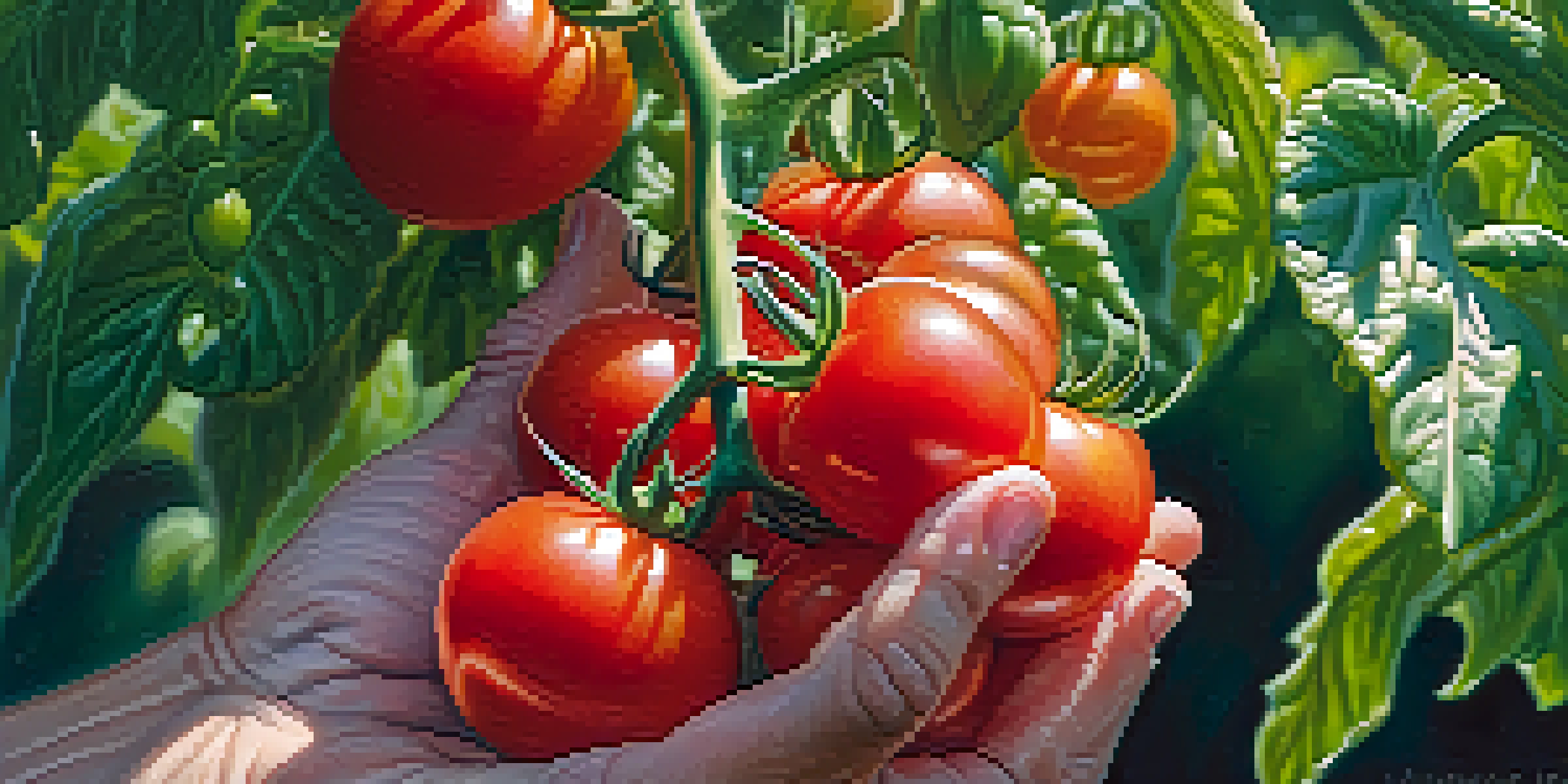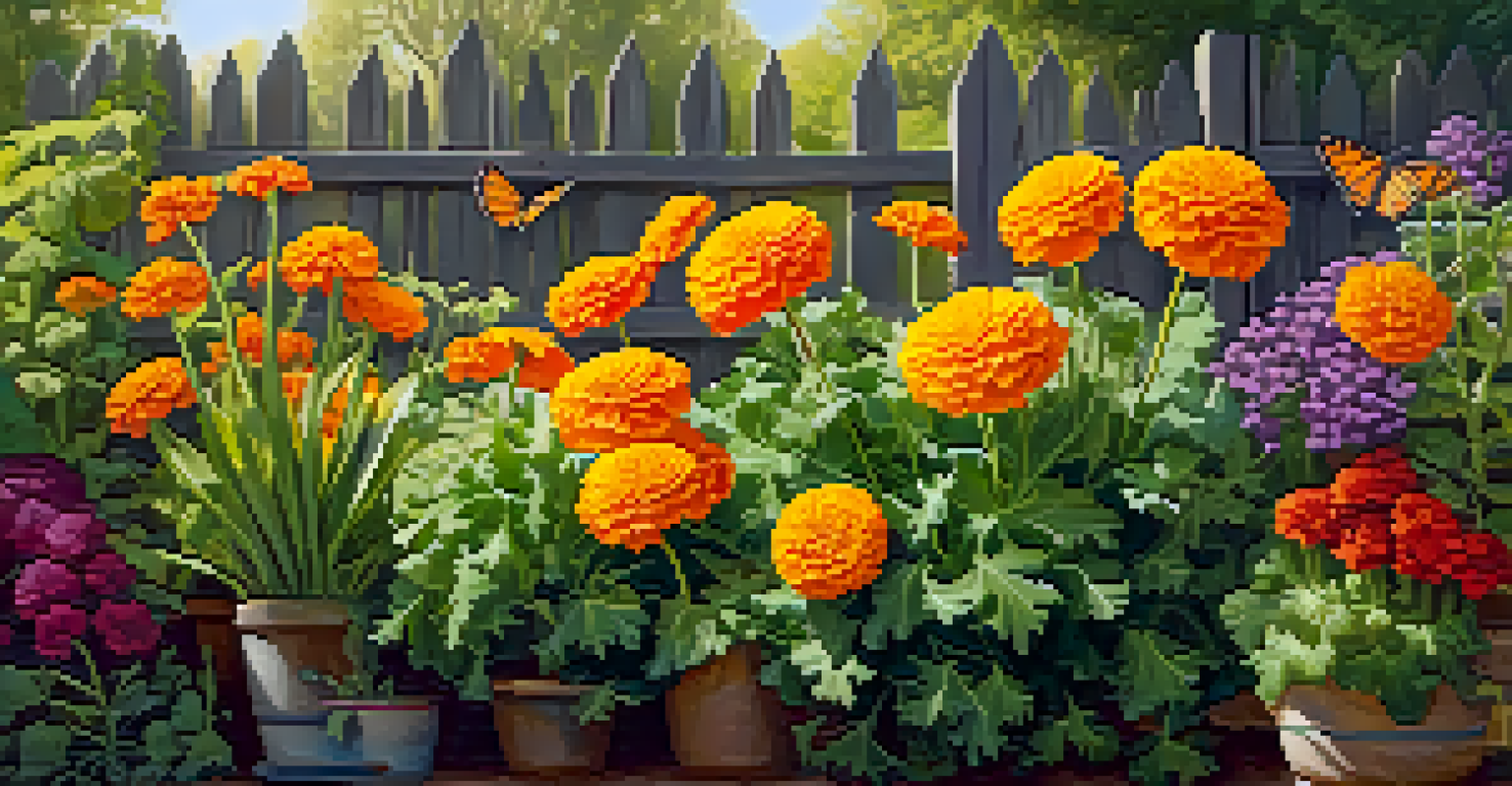Tips for Creating a Successful Home Garden Environment

Start with the Right Location for Your Garden
Choosing the right location is crucial for your garden's success. Look for a spot that gets plenty of sunlight, ideally six to eight hours a day, as most plants thrive in bright light. Additionally, consider accessibility for watering and harvesting; you want to make it easy to care for your plants.
The greatest gift of the garden is the restoration of the five senses.
Think about the wind exposure too. A sheltered area can protect delicate plants from harsh winds that might damage them. If you're unsure, observe the space throughout the day to see how the light and wind affect it before making your final decision.
Lastly, ensure the area has good drainage. Waterlogged soil can harm roots and promote diseases, so choose a spot that drains well or consider raised beds to help manage this issue.
Understand Your Soil and Amend as Needed
Soil is the foundation of a healthy garden. Conducting a soil test can provide you with vital information about pH levels and nutrient content, helping you understand what your soil lacks. This step is often overlooked but can make a significant difference in your plants' growth.

If your soil is too acidic or alkaline, you can amend it with organic materials like compost or lime, depending on what it needs. Adding compost not only improves soil structure but also provides essential nutrients for your plants, creating a rich environment for them to thrive.
Choose the Right Garden Location
Selecting a spot with ample sunlight, good drainage, and protection from harsh winds is essential for plant health.
Remember, healthy soil leads to healthy plants. Investing time in understanding and improving your soil will pay off in the long run, yielding a flourishing garden.
Choose the Right Plants for Your Climate Zone
Selecting plants that are suitable for your specific climate zone is key to a successful garden. Researching your USDA Plant Hardiness Zone can help you understand which plants will thrive in your area throughout the seasons. This means less stress for you and a higher chance of success.
To plant a garden is to believe in tomorrow.
Consider starting with native plants, as they are adapted to your local conditions and often require less maintenance. They're also beneficial for local wildlife, supporting pollinators like bees and butterflies, which are essential for a balanced ecosystem.
Furthermore, think about the growing season. Some plants prefer cooler temperatures, while others thrive in heat. Understanding these preferences will help you plan your garden layout and schedule effectively.
Plan Your Garden Layout for Maximum Efficiency
A well-planned garden layout can make your gardening experience more enjoyable and productive. Start by sketching your garden space to visualize where each plant will go. Grouping plants with similar light and water needs can save you time and effort when caring for them.
Consider incorporating companion planting, where certain plants are grown together for mutual benefits, like pest control or improved growth. For example, planting marigolds alongside vegetables can help deter pests naturally, reducing the need for chemical treatments.
Understand and Improve Your Soil
Conducting a soil test and amending it with organic materials will create a nutrient-rich environment for your plants.
Don't forget to leave pathways for easy access to your plants. This not only makes maintenance easier but also allows you to enjoy your garden without trampling on your precious plants.
Watering Wisely: Techniques for Healthy Plants
Watering your garden properly is essential for plant health. Instead of frequent shallow watering, aim for deep and infrequent watering sessions that encourage deep root growth. This practice helps plants become more drought-resistant and less dependent on constant moisture.
Consider using drip irrigation or soaker hoses to deliver water directly to the roots, minimizing evaporation and water waste. These methods save you time and ensure that your plants get the moisture they need without over-saturating the soil.
Timing also matters; water in the early morning or late afternoon when temperatures are cooler. This reduces evaporation and allows plants to absorb moisture effectively, setting them up for a successful day ahead.
Embrace Organic Gardening Practices for Better Results
Organic gardening focuses on sustainability and environmental health, making it a great choice for any gardener. By using natural fertilizers and pest control methods, you not only protect your plants but also contribute to the well-being of the ecosystem. Composting kitchen scraps and yard waste can enrich your soil without harmful chemicals.
Additionally, practicing crop rotation can help prevent soil depletion and reduce pest problems. By changing the types of plants you grow in a particular area each season, you can keep the soil balanced and healthy, which promotes stronger plants.
Practice Regular Garden Maintenance
Consistent weeding, pruning, and monitoring your plants can prevent issues and promote a thriving garden.
Remember, organic gardening is a journey. It may take time to see the benefits, but you'll build a resilient garden that thrives naturally, making it all worth it.
Regular Maintenance: Key to a Thriving Garden
Routine maintenance is essential for keeping your garden healthy and productive. Regular weeding, pruning, and deadheading can prevent pests and diseases from taking hold. Set aside some time each week to tend to your plants; this will keep them looking their best and encourage optimal growth.
Monitoring your plants for signs of stress or disease is also vital. Early detection allows you to address issues before they escalate, saving you time and resources in the long run. Look for unusual discoloration, wilting, or pest activity and take action quickly.

Lastly, don't forget to enjoy your garden! Take time to appreciate your hard work and the beauty around you. This connection to nature can rejuvenate your spirit and motivate you to keep caring for your green space.
Harvesting Tips for Maximum Flavor and Yield
Harvesting at the right time is crucial for maximizing flavor and yield. Many fruits and vegetables taste best when picked at their peak ripeness, so keep an eye on your plants for signs of readiness. For instance, tomatoes should feel slightly soft when ripe, while peppers should have a vibrant color.
Regular harvesting can also encourage plants to produce more. For example, picking beans frequently can stimulate new growth, leading to a bountiful harvest. This practice not only benefits you but also helps keep your plants healthy.
Finally, be gentle when harvesting to avoid damaging the plant. Using sharp scissors or shears can help you make clean cuts, ensuring the plant continues to thrive after you've taken your share.